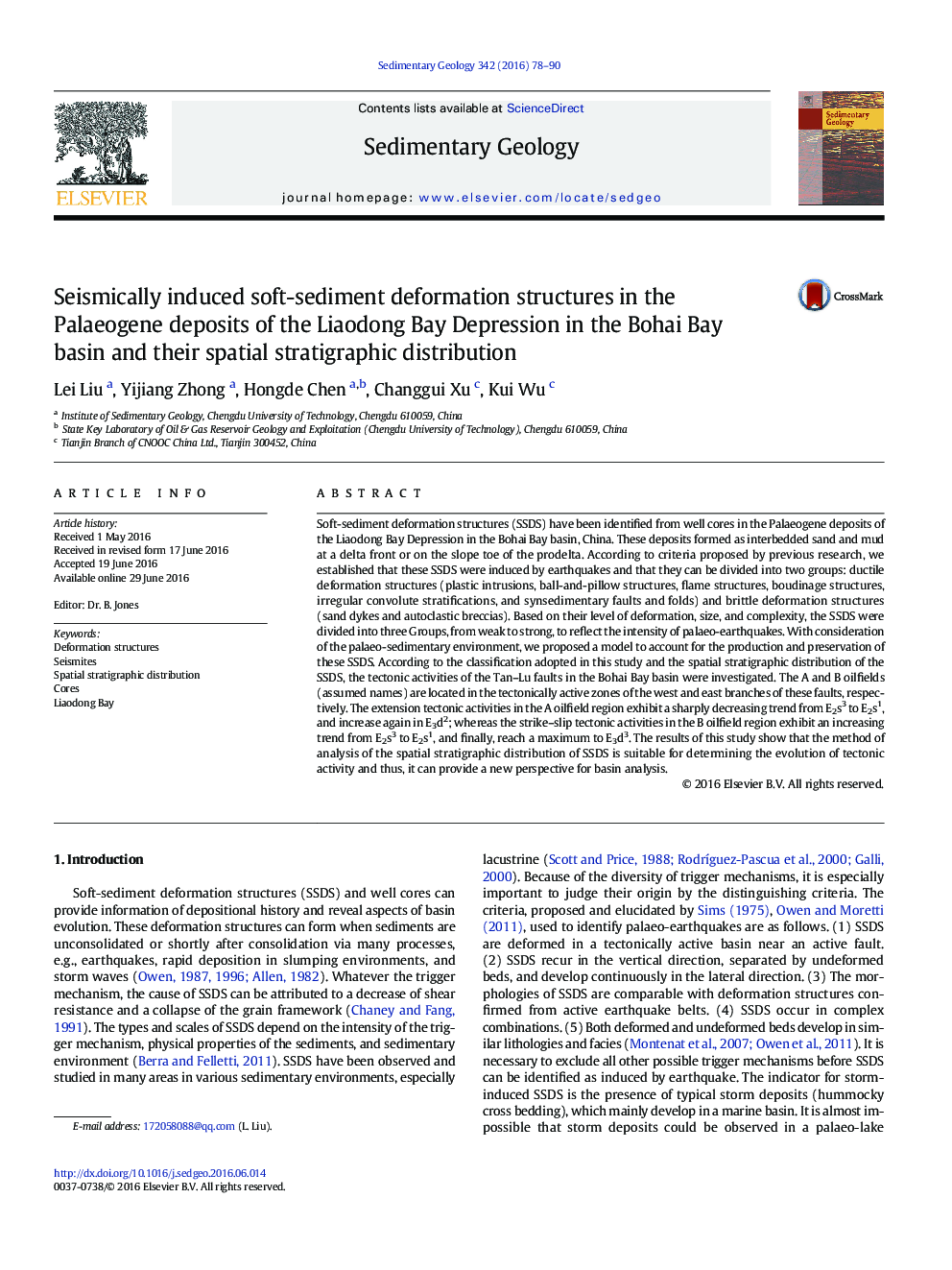| کد مقاله | کد نشریه | سال انتشار | مقاله انگلیسی | نسخه تمام متن |
|---|---|---|---|---|
| 4688982 | 1636021 | 2016 | 13 صفحه PDF | دانلود رایگان |
عنوان انگلیسی مقاله ISI
Seismically induced soft-sediment deformation structures in the Palaeogene deposits of the Liaodong Bay Depression in the Bohai Bay basin and their spatial stratigraphic distribution
ترجمه فارسی عنوان
ساختارهای تغییر شکل رسوبی نرم در ناحیه پائولوئین افسردگی خلیج لیائادونگ در حوضه خلیج بوخای ناشی از لرزه نگاری و توزیع چینه شناسی فضایی آنها
دانلود مقاله + سفارش ترجمه
دانلود مقاله ISI انگلیسی
رایگان برای ایرانیان
موضوعات مرتبط
مهندسی و علوم پایه
علوم زمین و سیارات
فرآیندهای سطح زمین
چکیده انگلیسی
Soft-sediment deformation structures (SSDS) have been identified from well cores in the Palaeogene deposits of the Liaodong Bay Depression in the Bohai Bay basin, China. These deposits formed as interbedded sand and mud at a delta front or on the slope toe of the prodelta. According to criteria proposed by previous research, we established that these SSDS were induced by earthquakes and that they can be divided into two groups: ductile deformation structures (plastic intrusions, ball-and-pillow structures, flame structures, boudinage structures, irregular convolute stratifications, and synsedimentary faults and folds) and brittle deformation structures (sand dykes and autoclastic breccias). Based on their level of deformation, size, and complexity, the SSDS were divided into three Groups, from weak to strong, to reflect the intensity of palaeo-earthquakes. With consideration of the palaeo-sedimentary environment, we proposed a model to account for the production and preservation of these SSDS. According to the classification adopted in this study and the spatial stratigraphic distribution of the SSDS, the tectonic activities of the Tan-Lu faults in the Bohai Bay basin were investigated. The A and B oilfields (assumed names) are located in the tectonically active zones of the west and east branches of these faults, respectively. The extension tectonic activities in the A oilfield region exhibit a sharply decreasing trend from E2s3 to E2s1, and increase again in E3d2; whereas the strike-slip tectonic activities in the B oilfield region exhibit an increasing trend from E2s3 to E2s1, and finally, reach a maximum to E3d3. The results of this study show that the method of analysis of the spatial stratigraphic distribution of SSDS is suitable for determining the evolution of tectonic activity and thus, it can provide a new perspective for basin analysis.
ناشر
Database: Elsevier - ScienceDirect (ساینس دایرکت)
Journal: Sedimentary Geology - Volume 342, 1 August 2016, Pages 78-90
Journal: Sedimentary Geology - Volume 342, 1 August 2016, Pages 78-90
نویسندگان
Lei Liu, Yijiang Zhong, Hongde Chen, Changgui Xu, Kui Wu,
